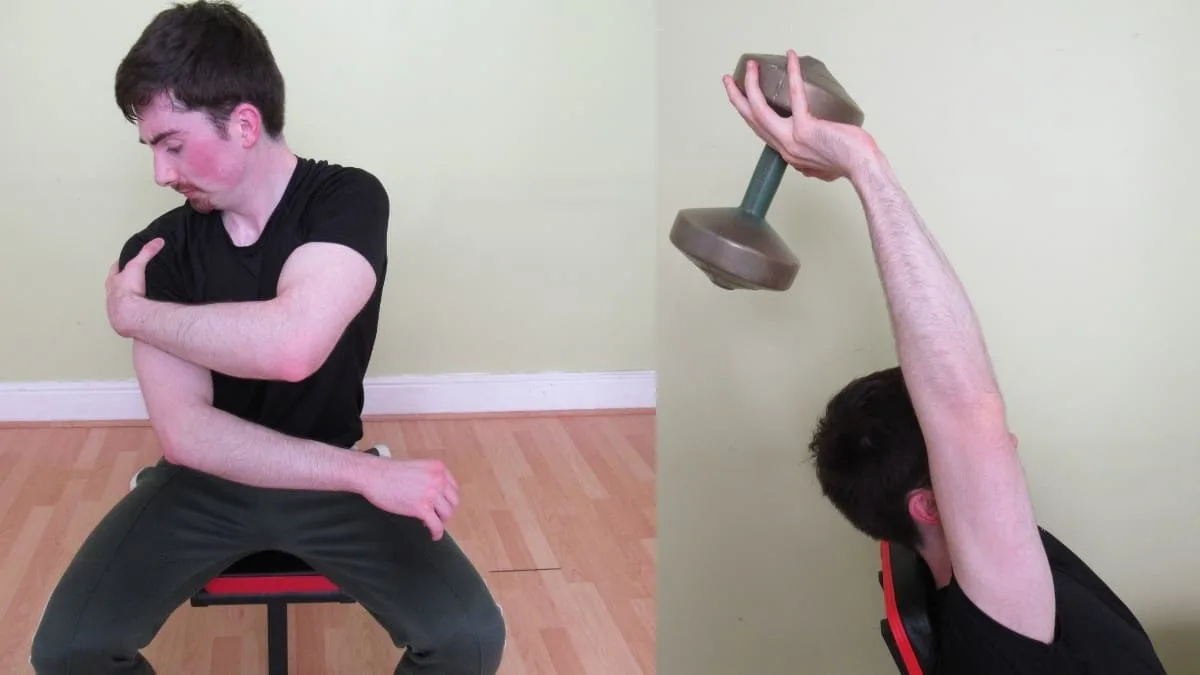Due to the triceps brachii origin on the posterior surface of the humerus and at the scapula, the long head requires overhead work for optimal development.
More specifically, you have to place your shoulders into flexion in order to work the long head of the triceps optimally because it’s the only head that acts on the shoulder joint.
However, this overhead positioning can cause shoulder pain during tricep extensions for many lifters.
This guide explains what to do if the tricep extension exercise hurts your shoulders.
Why overhead tricep extensions hurt your shoulders
If you’re experiencing deltoid pain during or after doing tricep extensions, then it might be due to one of these common problems.
If the issue persists, however, then you should talk with your doctor to get a proper diagnosis.
You have poor shoulder mobility
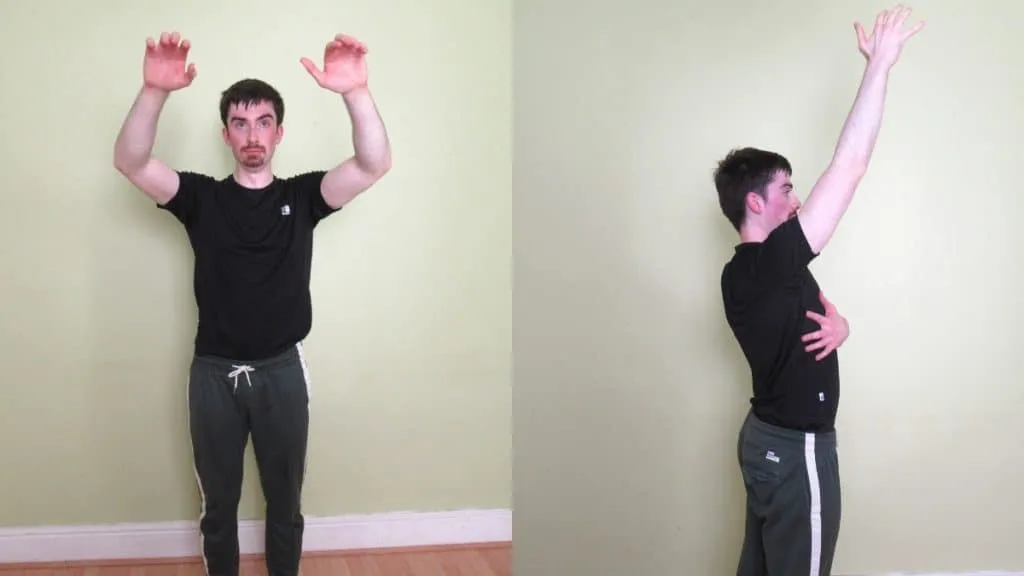
If you don’t warm up your shoulders before doing tricep extensions, then you might struggle to get your arms all the way over your head.
Arm swings are a good drill to start with because they get your shoulders used to moving throughout a full range of motion.
In a like manner, performing external rotations with a dumbbell, band, or cables has particularly good carryover to the overhead extension because when your arms are above your head during a tricep extension, your shoulders are, by definition, in external rotation. [1]
So if you can improve your external rotation strength, then you’ll also naturally enhance your ability to maintain a stable overhead shoulder position during extensions.
You may also have poor shoulder mobility due to a rotator cuff injury, which can actually be brought on through the performance of repetitive overhead movements. [2]
Your lats are tight
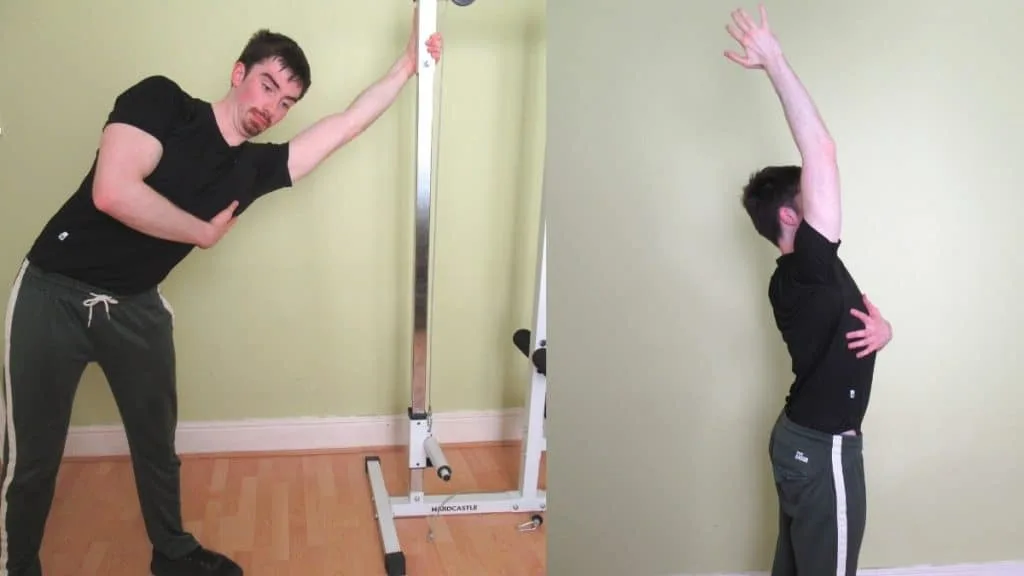
The latissimus dorsi is a powerful shoulder extensor that’s responsible for much of your overhead shoulder mobility.
Having tight lats can pretty much paralyze your ability to get your shoulders into the optimal overhead position, which in turn limits your performance during overhead bar extensions.
To stretch the lats properly, Michael Lau PT, DPT, CSCS recommends the following: First, abduct your shoulder (like in a lateral raise), flex your shoulders (like in an overhead extension), and then externally rotate your shoulder (point your elbow inward). [3]
You can see what the stretch looks like in the image above, but essentially, you’re raising your arm above your head while the glenohumeral joint (i.e., your shoulder) is also abducted and externally rotated.
If you can maintain this static stretch for 20-30 seconds, then you’ll be well on your way to reducing or even eliminating your tricep extension shoulder pain.
You can do the stretch by placing your hand on a doorway or any kind of stable, straight object, so there’s no need for any fancy rehab equipment.
To intensify the stretch further still, you can hold the same shoulder position—flexed, abducted, externally rotated—but while resisting the tension of a band. [4]
This modification will help to strengthen your lats as well as stretch them (it mimics a lat pulldown), which is precisely what you want when you’re trying to improve your shoulder mobility for the overhead extension.
You’re lifting too much weight
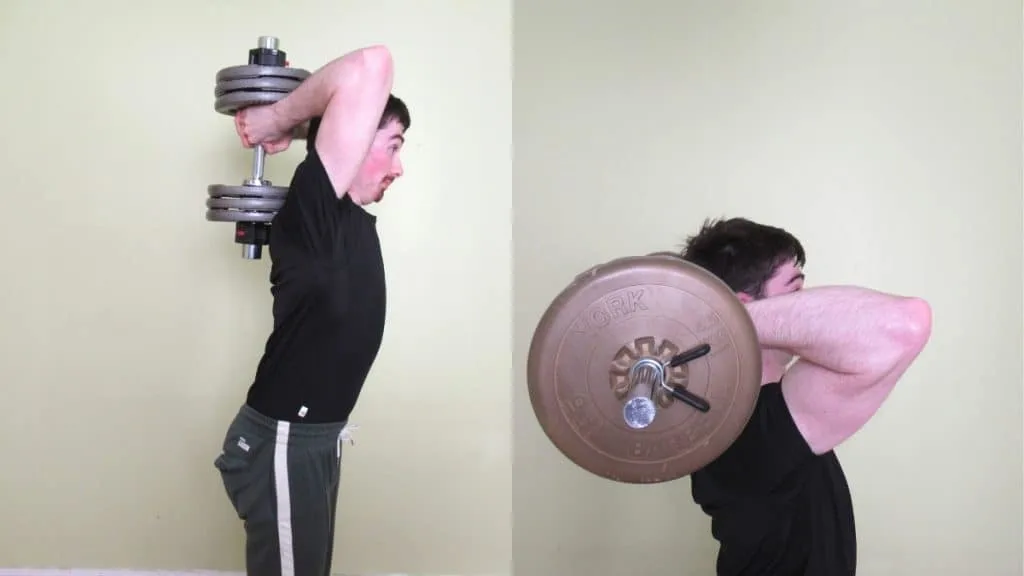
During a free weight or cable tricep extension, the resistance is always trying to pull your body backward.
While your triceps are responsible for dynamically lifting the weight, your shoulders and upper back muscles are responsible for maintaining the proper overhead positioning.
Lifting too much weight can impair the ability of your rotator cuffs to stabilize the shoulder joint. Overstressing the rotator cuff muscles like this, which are relatively small muscles, can often result in pain on both the front and back of the shoulder.
So while you may well need to improve your shoulder mobility and stretch your lats, your shoulder pain could also be due to overloading your rotator cuffs with too much resistance.
How to prevent shoulder pain during tricep extensions
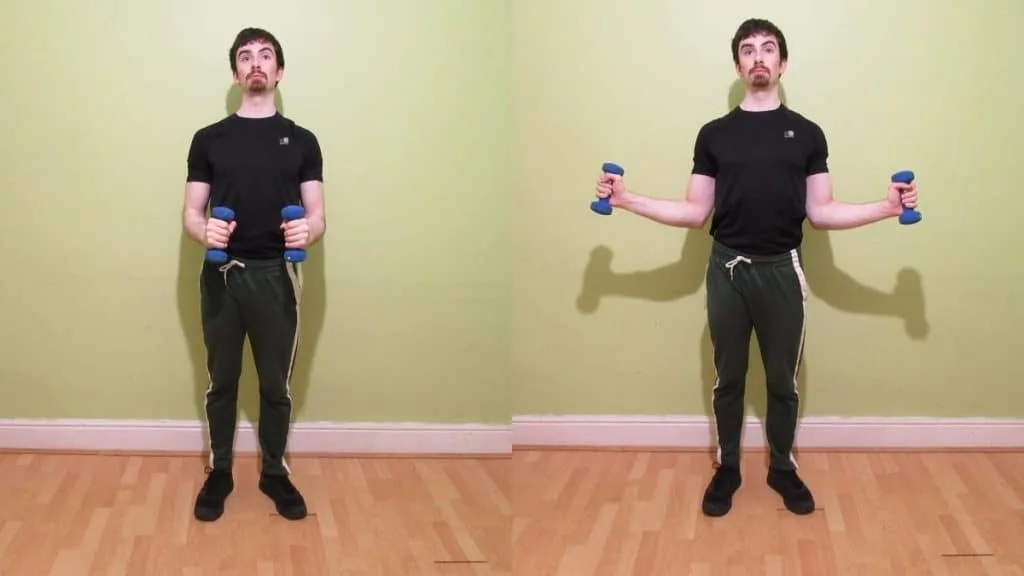
Before doing an overhead extension or a one arm tricep extension, make sure to stretch your lats with the exercise that we recommended above.
This will help you to get your shoulders into a higher degree of flexion (i.e., more over your head), which in turn will enable you to place your triceps under a deeper eccentric stretch.
After that, you could perform some external rotation exercises to improve your shoulder mobility. Just make sure that you don’t train to failure; otherwise, your infraspinatus may be too fatigued to maintain a strong overhead shoulder position.
This is why it can be a wise idea to do shoulder mobility work in a separate session away from your strength training workout.
Also, make sure to perform plenty of tricep extension warm-up sets so that you don’t experience elbow pain during and after doing triceps weight lifting.
Progressively increasing the resistance can also help to keep your rotator cuffs out of trouble by gradually placing them under more tension (rather than just forcing them to lift a maximal weight on the very first set).
If the exercise still hurts your shoulder, then you can seek out an appropriate overhead tricep extension replacement.
Lying cambered bar extensions are an excellent substitute for overhead extensions because they keep your shoulders in a lower degree of flexion and tend to load the elbows more heavily than the shoulder joints.
Just make sure to bring the bar behind your head during any kind of lying extension so that you don’t hurt your elbow joints. Allowing your shoulders to drift backward as you lower the weight distributes the tension over two joints (shoulder and elbows) rather than just your elbows.
Conclusion
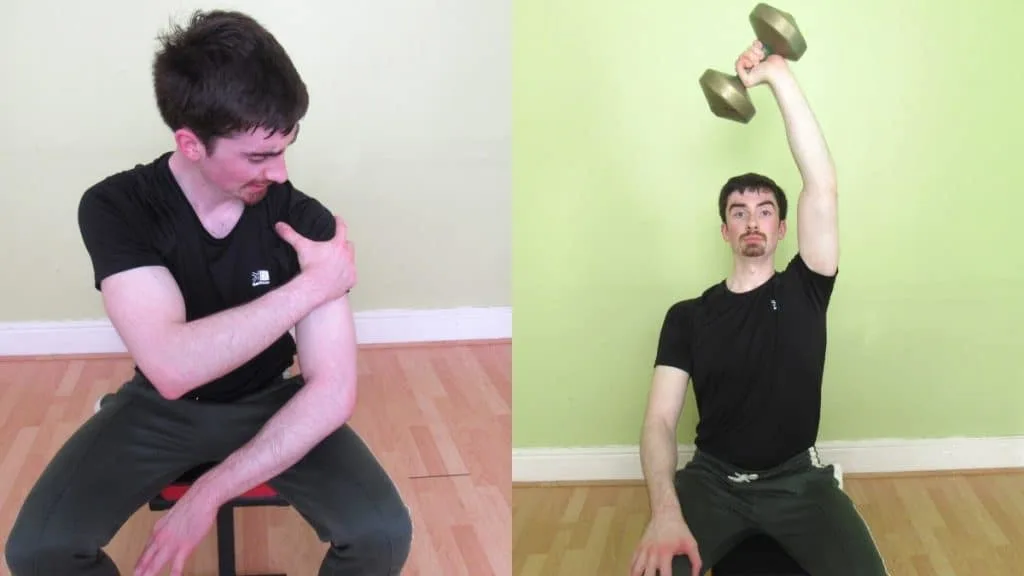
If overhead tricep extensions hurt your shoulder, then first make sure to relieve your tight lats by stretching them right before you do extensions.
Stretching your lats will enable you to get your shoulders into a higher degree of flexion and thus make the most of the tricep extension.
You can also strengthen your infraspinatus and other rotator cuff muscles by doing external rotation exercises.
These drills will help your rotator cuffs to become more resistant to the tension exerted by the weight, which in turn will improve your shoulder mobility and tricep extension performance.
Of course, if you still feel shoulder pain during tricep extensions even after trying these solutions, then make sure to talk with your doctor. You should ideally talk to a medical professional as soon as you feel the pain so that they can rule out a more serious problem.
References
- Lindberg, S. (2020, January 10). 10 Shoulder Mobility Exercises and Stretches. Healthline. https://www.healthline.com/health/shoulder-mobility-exercises
- Fletcher, J. (2019, February 13). How to prevent rotator cuff injuries. MedicalNewsToday. https://www.medicalnewstoday.com/articles/324435
- Lau, M. (2021, September 23). Best Lat Stretches For Overhead Mobility – The Prehab Guys. The Prehab Guys. https://theprehabguys.com/best-lat-stretches/
- [P]Rehab. (2021, July 20). How to Properly Stretch Your Lats [Video]. YouTube. https://www.youtube.com/watch?v=D6CAdPeUgQo

